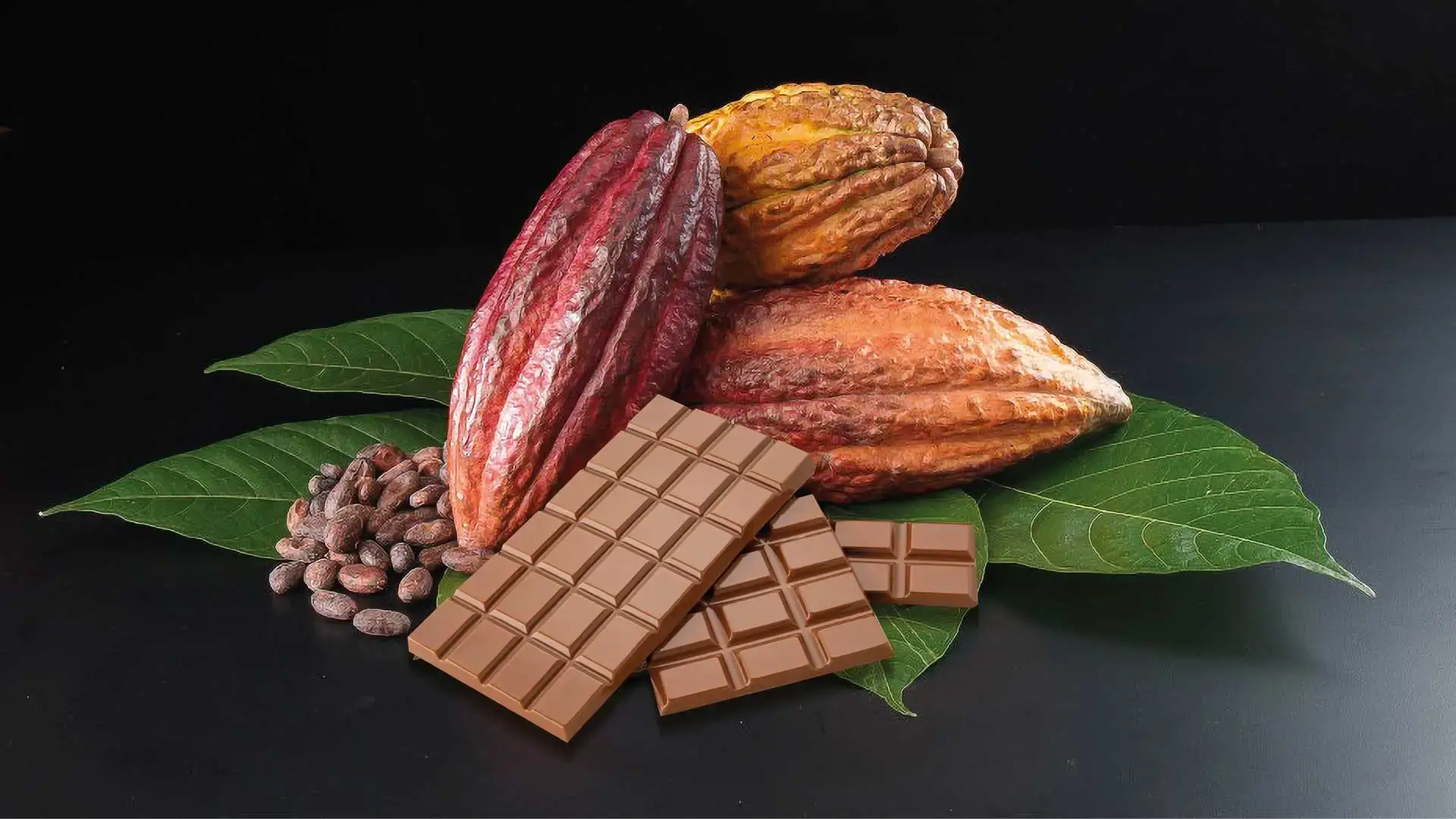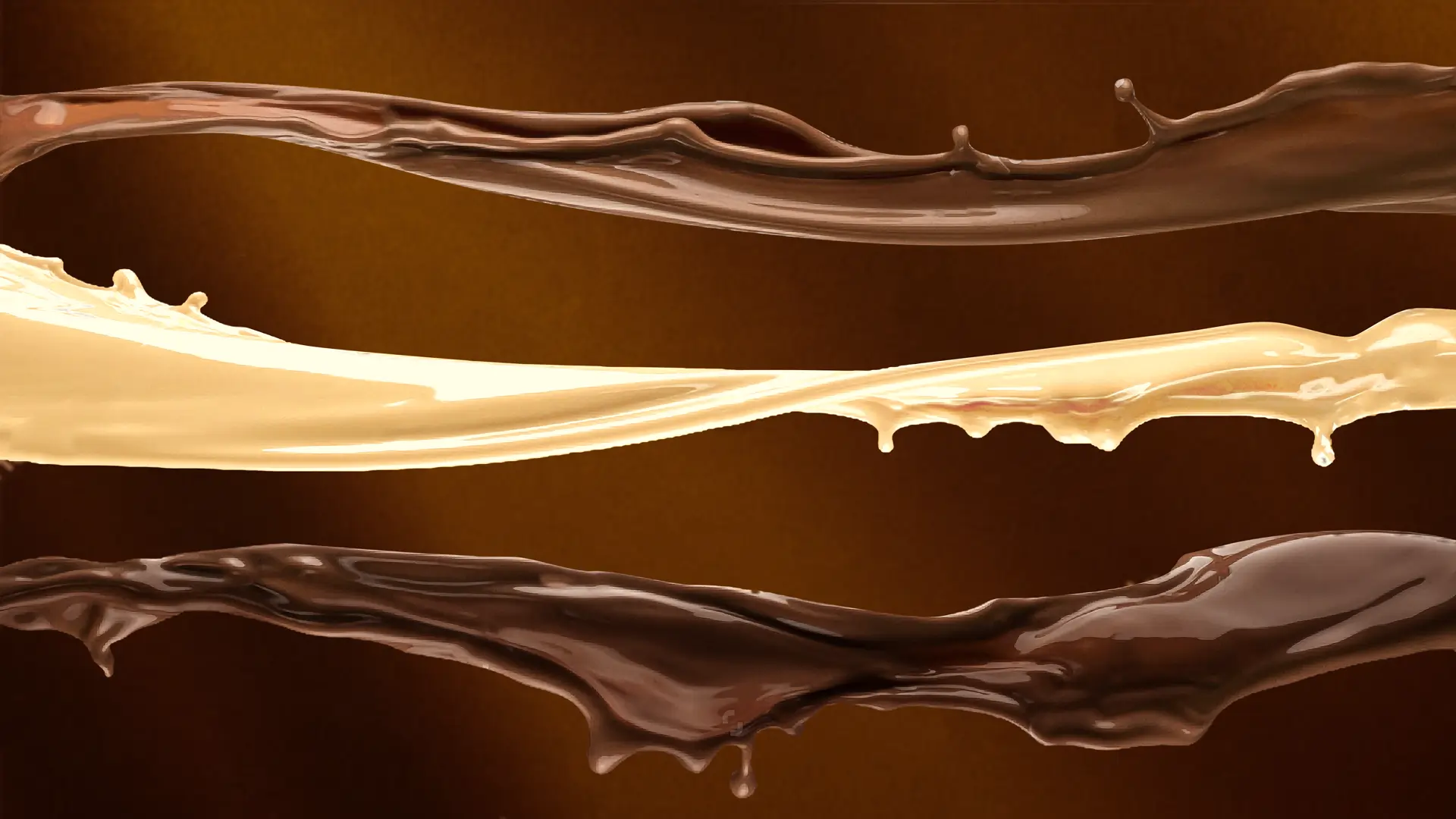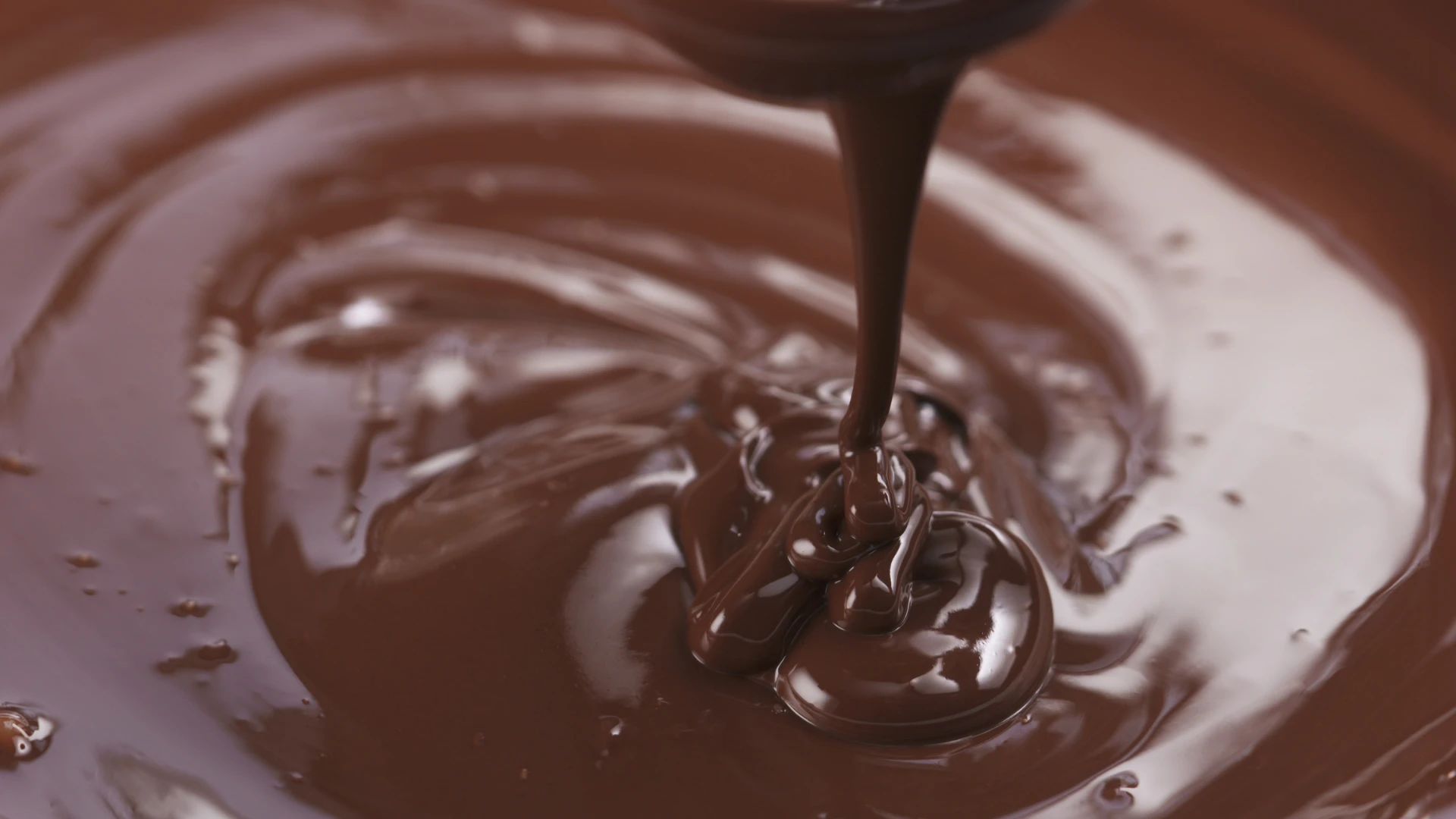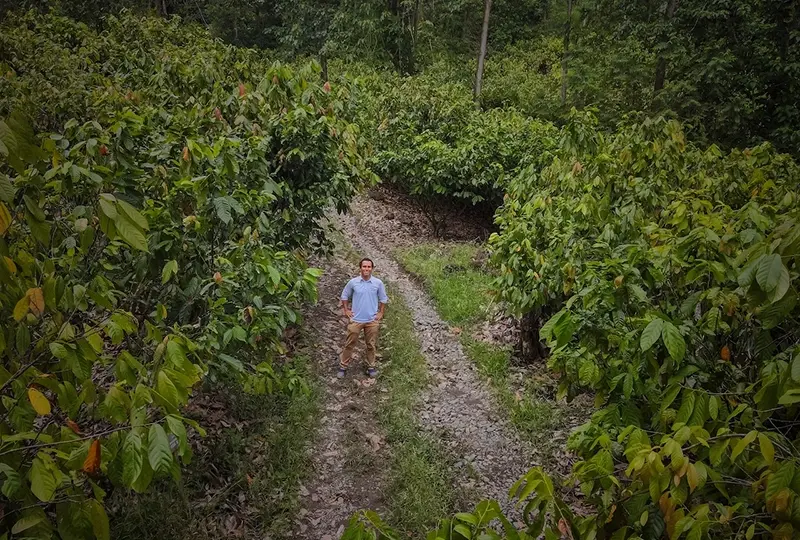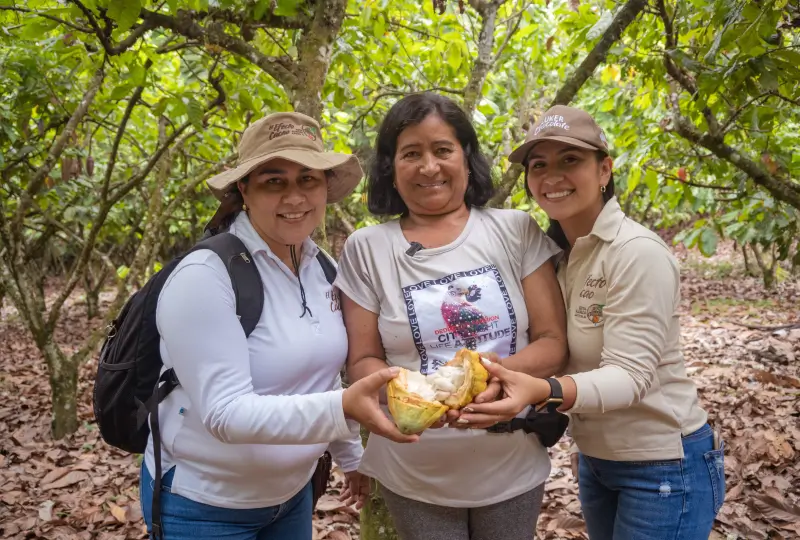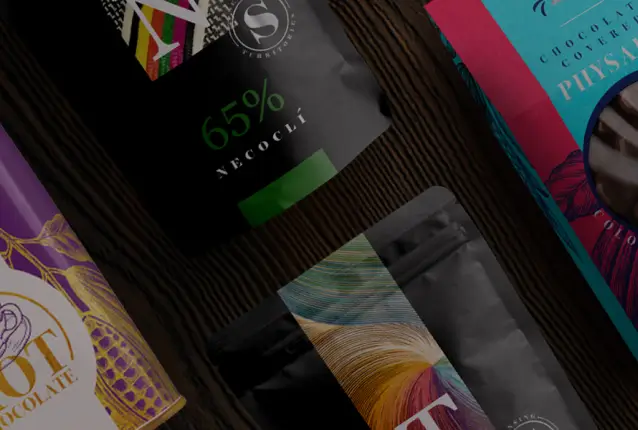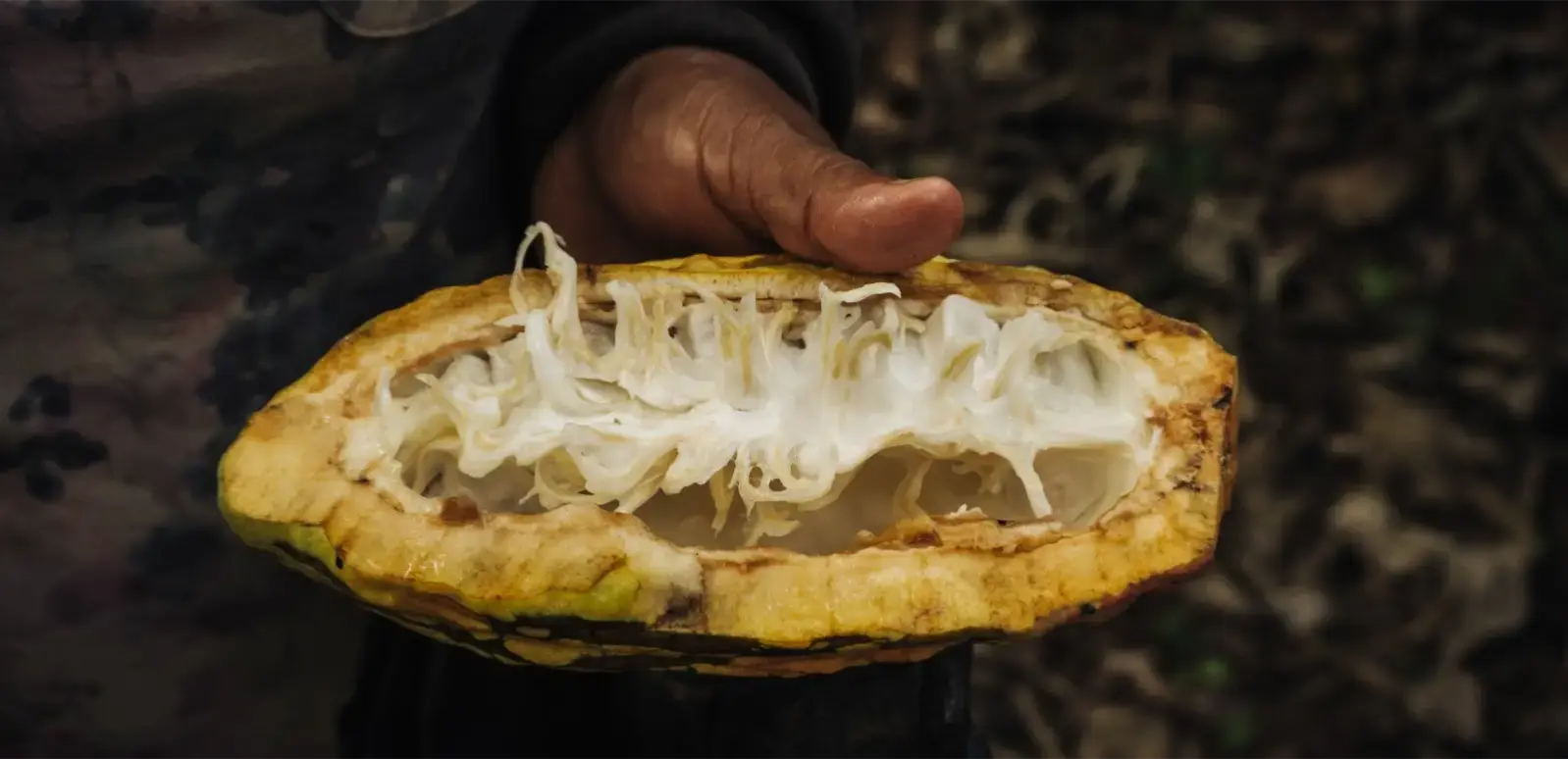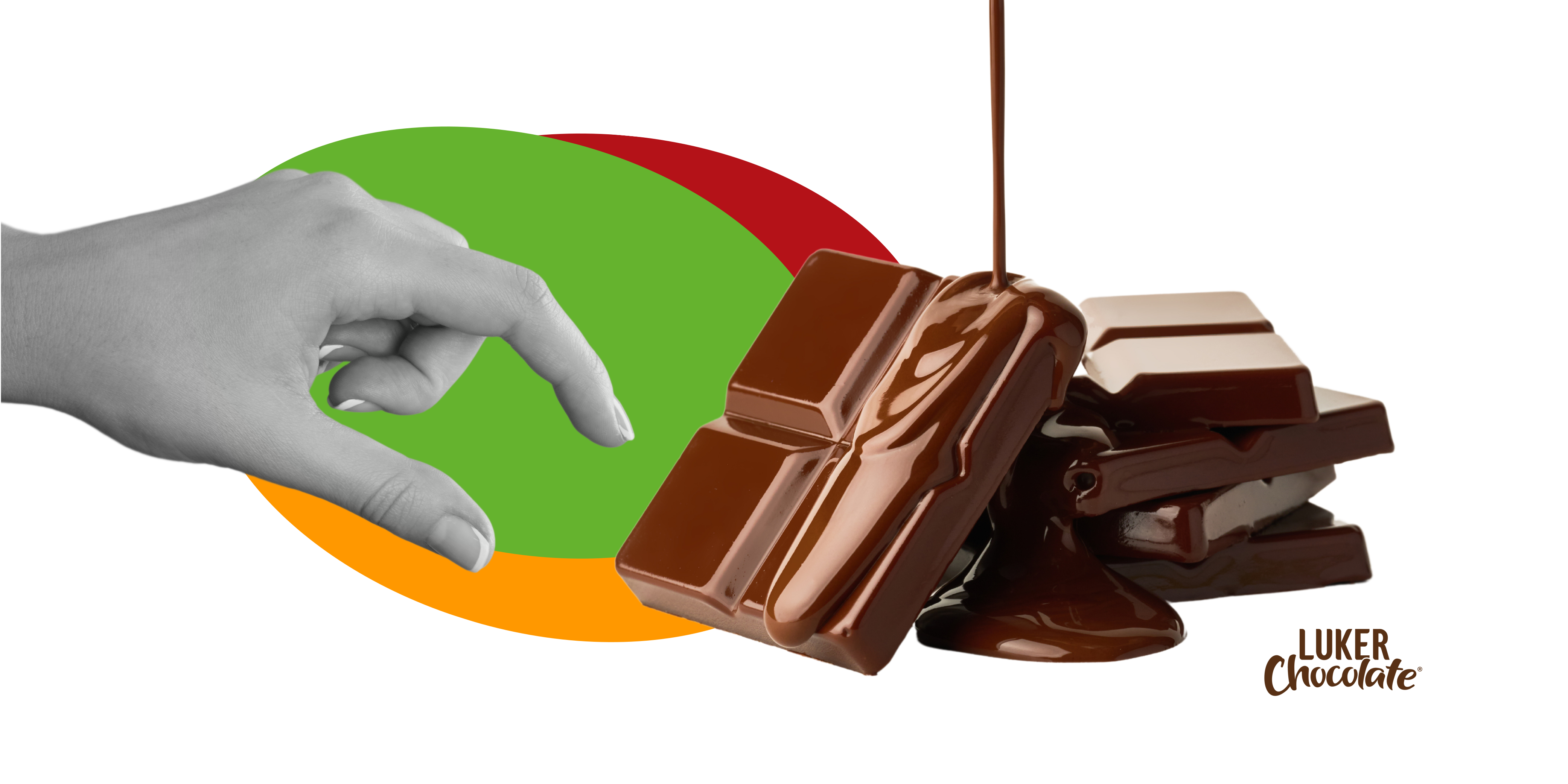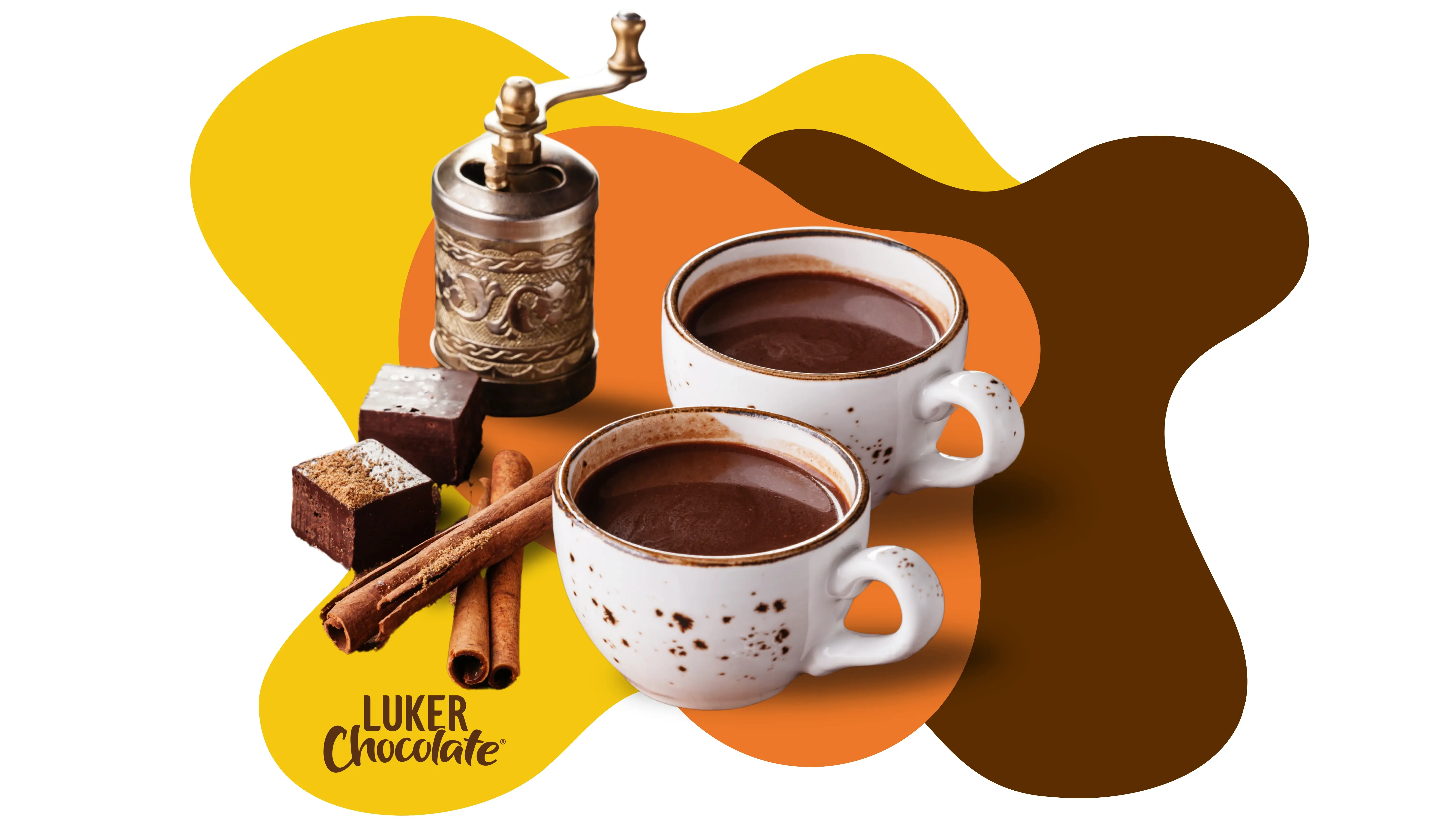|
Updated and republished on 28th of Oct, 2025 |
|
This blog was originally posted on 9th Oct 2024 and has been updated for clarity, relevance, and accuracy. |
> Explore Hot chocolate product options!<
The global hot chocolate market is witnessing impressive growth, evolving from a classic comfort drink into an exciting sector full of innovation and new consumer trends. In 2022, the market was valued at USD 3,789.2 million and is expected to surge to USD 5,771.2 million by 2030, expanding at a compound annual growth rate (CAGR) of 5.4% from 2024 to 2031 (DataM Intelligence, 2023).
This expansion is driven by a change in consumer lifestyles, increased awareness of health benefits, and a demand for innovative experiences, positioning hot chocolate as a key player in the global beverage industry.
Whether you own a brand, are a product developer, or are looking to innovate with your offerings, understanding these trends can help you deliver products that resonate with your customers' needs. We will explore these key questions to identify these opportunities:
- What are the Top Chocolate Market Drivers and Consumer Preferences?
- What are the top Flavour Innovations in Hot Chocolate?
- Are There Opportunities in Health-Focused Hot Chocolate Products?
- How to Leverage Hot Chocolate Trends for Strategic Brand Growth
- How to Market Hot Chocolate to Today’s Consumers?
Changing lifestyles and increased awareness of health and well-being are significantly shaping consumer preferences. As more individuals seek nutritious and functional food and beverages, hot chocolate has become increasingly attractive, thanks to its nutritional profile, particularly for dark varieties.
Studies have indicated that dark chocolate helps lower cardiovascular disease risks, enhance blood flow, and reduce blood pressure (Wang, C. W., 2025).
For brands exploring innovation in this space, investing in agile and insight-led hot chocolate product development is key to translating consumer trends into successful products.
1. Top Chocolate Market Drivers and Consumer Preferences
As consumer lifestyles evolve, so do their preferences, driving significant changes in the hot chocolate market. Several factors are currently shaping demand and creating opportunities for brands to innovate and differentiate their products.
- Health-Conscious Indulgence Trends: While hot chocolate is traditionally viewed as a comfort drink, the rising awareness of the health benefits associated with cocoa, particularly its flavonoid content, has led to a shift in consumer perception. In markets such as North America and Europe, there is an increasing preference for dark chocolate-based hot drinks rich in antioxidants, which are associated with lowering blood pressure and improving cardiovascular health.
Brands are responding by introducing more health-focused options, such as low-sugar and dairy-free versions of hot chocolate, catering to those looking to indulge while maintaining a healthier lifestyle. This shift is reflected in the growing availability of hot chocolates made with plant-based milk alternatives like oat, almond, and coconut milk. - On-the-Go Convenience: In today’s fast-paced world, convenience is key. Single-serve hot chocolate sachets, pods, and ready-to-drink (RTD) formats have grown in popularity, especially in markets like the UK and the US. These products are designed to meet the needs of busy consumers who seek premium experiences on the go without compromising on quality. The RTD hot chocolate market, in particular, has shown steady growth as more consumers prioritise convenience in their daily routines.

- Offline Dominance, But Growing Online: While e-commerce channels are growing, approximately 83% of hot chocolate consumers still prefer purchasing their products through offline channels. The tactile experience of feeling, smelling, and tasting the product in-store plays a crucial role in their purchasing decisions. However, brands should not overlook the rising importance of digital channels. As more consumers turn to online shopping for convenience, subscription-based models and customisable hot chocolate experiences will likely grow in popularity over the next few years.
At Luker Chocolate, we’ve seen first-hand how demand for premium hot chocolate experiences has increased. Our clients are responding to consumers, seeking out products with rich, comforting flavours and a sustainable origin.
2. What are the opportunities for flavour innovations in hot chocolate?
Flavour innovation has become a significant aspect of the growing hot chocolate market, presenting a rich avenue for brands to explore. As consumers continue to seek out new and diverse experiences, the opportunity for brands lies in expanding their offerings to cater to a broader spectrum of tastes. This trend is being amplified by the rise of café culture and the growing demand for unique beverages that align with modern consumer lifestyles.
For example, flavours like chili, lavender, and cardamom are becoming popular, providing a new twist to the classic hot chocolate drink. This trend caters particularly to younger demographics, such as millennials and Gen Z, who are inclined towards trying new and exciting flavours.
More than 40% of consumers report that nostalgic and traditional flavours significantly influence their food and beverage selections (Food Business News, 2024).
Spicy & Bold Flavours
Spicy hot chocolate, often infused with chilli or cinnamon, is gaining popularity in both artisanal cafés and home recipes.
- This trend is inspired by ancient Mesoamerican chocolate beverages, which used spices like chilli to enhance the cocoa flavour.
- In markets such as the UK and US, consumers are embracing these bold and exotic flavour profiles, as they seek more sensory and experiential products.
- Spicy hot chocolates not only appeal to the adventurous palate but also align with the broader trend of consumers exploring flavours rooted in tradition and history .
Floral Infusions
Floral-infused hot chocolates are gaining traction, particularly in premium markets across Europe.
- Ingredients such as lavender, rose, and hibiscus are being used to create luxurious, aromatic experiences that appeal to consumers seeking something beyond the ordinary.
- These floral notes add a layer of sophistication, elevating hot chocolate from a comfort drink to a sensory indulgence.
- This year, North American markets are seeing a rise in herbal, floral-infused flavours as these flavours appeal to premiumness, natural ingredients and seasonal novelty.
>Read more about the trending chocolate flavours in chocolate this year<
Localised & Regional Flavours
Consumers are increasingly interested in local and regional ingredients, particularly in Latin America, where traditional flavours such as panela (unrefined cane sugar) and cinnamon are being incorporated into hot chocolate recipes. This trend not only appeals to the growing demand for authenticity and regionality but also aligns with the rise of ethically sourced and sustainable ingredients.
- Mexican and Colombian hot chocolates, for example, are gaining traction globally as consumers become more familiar with these distinctive flavours.
Global Cultural Influences
Hot chocolate is becoming a canvas for global cultural influences. Flavours inspired by Japanese matcha, Middle Eastern spices like cardamom, and even South African rooibos tea are entering the market, driven by consumers’ desire to explore the world through food.
This trend is particularly relevant in urban markets across Europe and North America, where cosmopolitan consumers are eager to try new and exciting flavour combinations.
Actionable Opportunities for You:- Develop Limited-Edition Hot Chocolate Ranges: Use spices, floral notes, and alcohol infusions to create seasonal or limited-time offers.
- Emphasise Storytelling and Authenticity: Highlight the regional and cultural roots of your flavour innovations to create a stronger connection with consumers.
- Explore Fruit and Citrus Flavour Profiles: Introduce a range of hot chocolates with fruit or citrus infusions, positioning them as healthier, refreshing alternatives.
- Create Co-Branded Products: Partner with alcohol or regional brands to tap into new markets and reach more consumers.
- Leverage Seasonal Trends: Launch alcohol-infused and spiced hot chocolates during festive periods to attract consumers looking for a unique and indulgent experience.
We believe in marrying tradition with modern flavour trends, allowing consumers to experience the best of both worlds—authentic, bold, and experimental flavours grounded in heritage.
3. Are There Opportunities in Health-Focused Hot Chocolate Products?
The health and wellness movement is having a profound effect on the hot chocolate market, with more consumers opting for products that not only taste good but also offer functional benefits. This trend is expected to grow further, as the hot chocolate market becomes more aligned with the broader health-conscious beverage sector.
Functional Ingredients
The inclusion of functional ingredients such as collagen, adaptogens (like ashwagandha or reishi mushrooms), and added vitamins is becoming increasingly popular.
- Functional ingredients not only appeal to health-conscious consumers but also offer an added layer of marketability, positioning hot chocolate as more than just an indulgence.
- According to DataIntel, the rise of functional ingredients in beverages is expected to continue shaping product development, particularly in North America and Europe, focusing on protein-enriched drinks.
Plant-Based Hot Chocolates
One of the most prominent health-driven trends is the rise of plant-based products.
- As more consumers reduce their dairy intake for health or ethical reasons, plant-based milk alternatives—such as almond, oat, and coconut—are becoming the default option for many hot chocolate drinkers.
- The plant-based hot chocolate market is projected to grow in 2026 as part of the larger plant-based movement, especially in regions like the UK and Germany, where veganism is on the rise.
Low-Sugar & No-Sugar Variants
Another key trend in health-focused hot chocolates is the demand for low-sugar and no-sugar-added options.
- Consumers are becoming more conscious of their sugar intake, and brands are responding by developing hot chocolates that offer the same rich flavours with significantly less sugar.
- Brands using natural sweeteners like stevia or monk fruit are capturing the interest of health-conscious consumers without compromising on taste, even more so, taking into account the push for Non-HFSS claims in the UK.
4. How to Leverage Consumer Trends to Drive Chocolate Brand Growth
Understanding and aligning with consumer trends is essential for brand growth in today’s competitive hot chocolate market. The evolving preferences of consumers present an array of opportunities for brands to innovate and create products that resonate with their target audiences.

Premiumisation & Craft Offerings
Consumers are increasingly drawn to premium and craft products across the food and beverage industry, and hot chocolate is no exception. The rise of artisanal, small-batch hot chocolates, often featuring high-cocoa content and unique flavour combinations, reflects the growing demand for premiumisation.
The premium chocolate market is set to grow as consumers seek indulgent, high-quality experiences that elevate traditional hot chocolate to a luxurious treat.
If you focus on offering craft, single-origin hot chocolates or limited-edition seasonal flavours, then you can tap into this desire for premium experiences. Creating stories around the origin of the cocoa, the production process, and the artisanal techniques used can help differentiate products in an increasingly crowded market.
Sustainability as a Growth Driver
As highlighted earlier, sustainability is not just a consumer expectation but a powerful growth driver for brands in the hot chocolate market.
- PwC (2024) found that over four-fifths (80%) of consumers are willing to pay more for sustainable products, even as they face cost-of-living pressures.
- For hot chocolate brands, this means that investments in sustainable sourcing, fair trade cocoa, and eco-friendly packaging can yield significant returns in terms of brand loyalty and market positioning.
- Actively communicate your sustainability efforts to consumers, using clear labelling and marketing campaigns to highlight your commitment to responsible sourcing and production practices.
Embracing Digital Channels
As online sales channels gain traction, brands that establish a strong digital presence will be well-positioned to capture a growing segment of consumers.
While consumers still prefer offline purchasing for hot chocolate, the rise of e-commerce platforms presents a new frontier for growth, especially in regions like North America.
Personalised online shopping experiences, subscription models, and direct-to-consumer channels are becoming increasingly attractive.
Actionable Opportunity: You can create immersive digital experiences that replicate the personalised touch of offline shopping. Offering product bundles, and exclusive online flavours can help bridge the gap between offline and online sales, providing convenience without sacrificing the personal connection consumers crave.
5. How to Market Hot Chocolate to Today’s Consumer?
Marketing hot chocolate effectively requires brands to adapt their messaging and strategies to align with the diverse and evolving needs of modern consumers. Here’s how brands can capture attention and build loyalty:
- Storytelling & Authenticity: Consumers today are drawn to brands that communicate authentic stories. Whether it’s about the ethical sourcing of cocoa, the artisanal process behind production, or the personal stories of the farmers, storytelling creates a deep connection with consumers. According to Harvard Business Review, 64% of consumers want brands to take a stand on social issues, and hot chocolate brands can leverage this by sharing their sustainability and ethical sourcing initiatives.
Brands should focus on transparency and create narratives that resonate with their audience’s values, such as fair trade practices, eco-friendly packaging, and responsible production. - Personalisation in Marketing: Personalisation continues to be a key driver in consumer satisfaction and brand loyalty. Consumers expect tailored content, product recommendations, and even flavour options. In the hot chocolate sector, personalisation can be as simple as offering customised gift boxes, create-your-own flavour kits, or tailored subscription models.
Leveraging data-driven insights to deliver personalised content and marketing messages will enable brands to deepen engagement with their customers. This approach is particularly effective in e-commerce, where personalised shopping experiences can drive higher conversion rates and customer loyalty.
Actionable Opportunity: Utilising tools like AI-based recommendations and personalised email marketing can help brands deliver highly relevant content and product suggestions. Personalised touches, such as birthday discounts or exclusive flavours based on past purchases, can enhance brand loyalty and keep consumers engaged.
Capitalising on Hot Chocolate Trends for Strategic Growth
To capitalise on these opportunities, brands need to develop a strategic approach.
Innovation should not only follow market trends but also align with the brand’s mission and values. For example, brands that prioritise sustainability should ensure that their new product lines are consistent with this commitment. Whether launching plant-based hot chocolates, functional beverages, or premium single-origin offerings, innovation should serve both consumer demand and the brand’s long-term vision.

While North America is currently the dominant market for hot chocolate, regions such as Latin America and Asia offer significant opportunities for growth. However, successful entry into these markets requires localisation. Brands need to tailor their products and marketing strategies to align with local tastes, traditions, and consumer behaviours.
For instance, in Asia, the preference for tea-based beverages offers opportunities for hybrid products that combine the richness of hot chocolate with the subtlety of tea flavours. In Latin America, traditional hot beverages like atole or champurrado can inspire innovative hot chocolate variations that appeal to local consumers.
|
Co-creating to further expand your hot chocolate offerings At Luker Chocolate, we are committed to continuous innovation while staying true to our roots in sustainable, ethically sourced cocoa. As we look to the future, we see great potential in co-creating with you to further expand your hot chocolate offerings, developing specific products that indulge consumers and fit the idea and flavour you have in mind. Our expertise in crafting high-quality chocolate, combined with our purpose to make the world a better place through chocolate, ensures that we remain at the forefront of every step of the product development process! |
By leveraging consumer insights and market trends, you can strengthen or complement your portfolio of products that not only meet current demand but also position you for future success.
